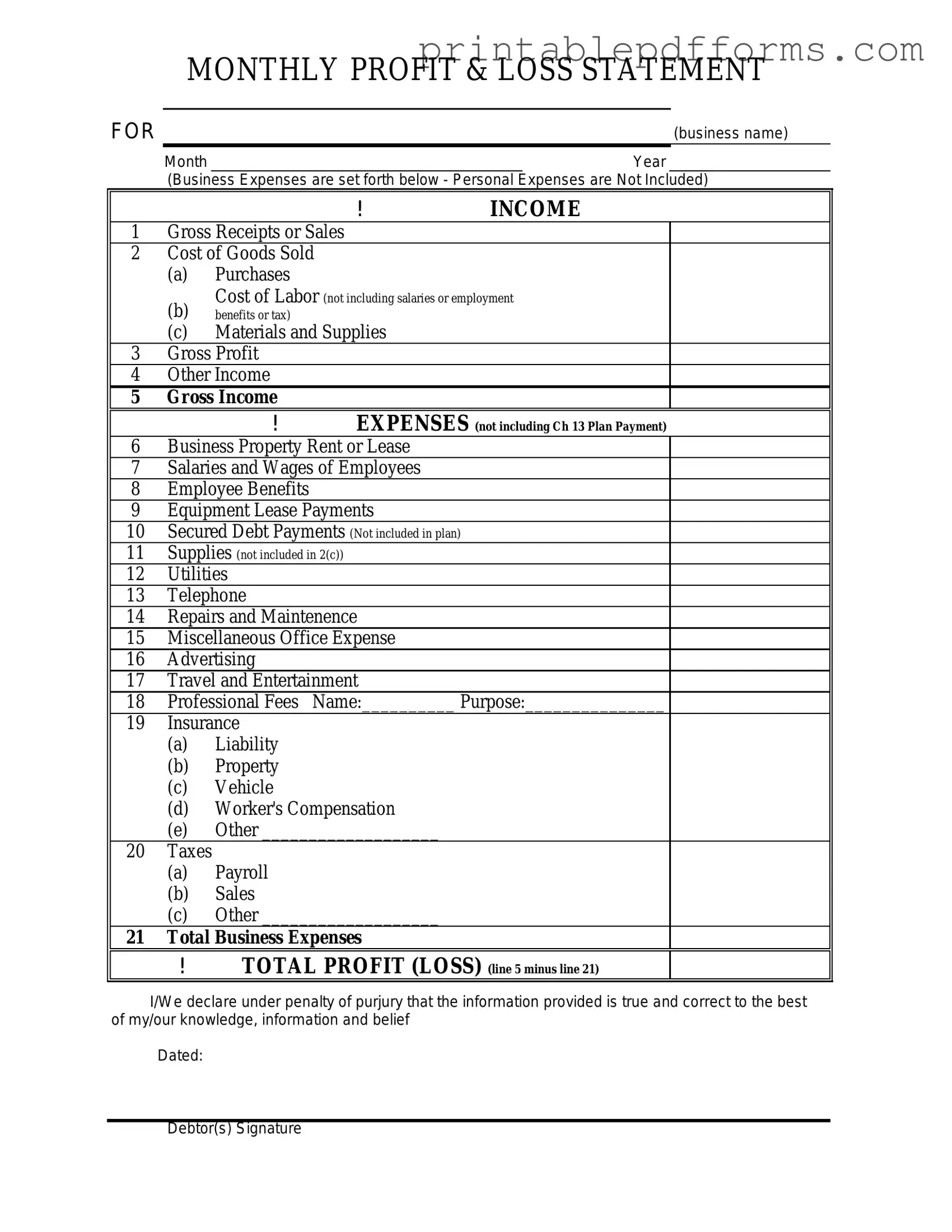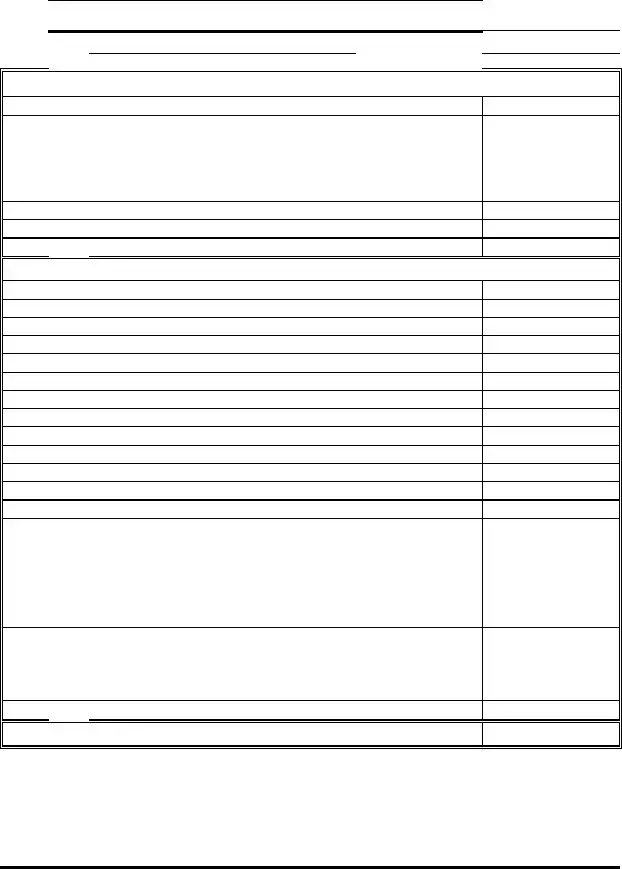A Profit and Loss form, often referred to as a P&L statement, is a financial document that summarizes a company's revenues, costs, and expenses over a specific period. This form helps businesses understand their financial performance and profitability.
The Profit and Loss form is crucial for several reasons:
-
It provides insights into revenue and expenses.
-
It helps identify trends over time.
-
It is essential for tax preparation.
-
Investors and lenders often require it to assess financial health.
Businesses typically prepare a Profit and Loss form on a monthly, quarterly, or annual basis. The frequency depends on the size of the business and its reporting requirements. Regular updates can help in making informed financial decisions.
A standard Profit and Loss form includes the following sections:
-
Revenue:
Total income generated from sales or services.
-
Cost of Goods Sold (COGS):
Direct costs attributable to the production of goods sold.
-
Gross Profit:
Revenue minus COGS.
-
Operating Expenses:
Costs related to running the business, such as rent and salaries.
-
Net Profit:
The final profit after all expenses have been deducted from revenue.
Yes, the Profit and Loss form is essential for tax purposes. It provides a clear picture of your business's income and expenses, which is necessary for accurately reporting taxable income. Always ensure that the information is accurate and up-to-date.
Interpreting the results involves analyzing key figures such as gross profit, operating profit, and net profit. A positive net profit indicates that your business is making money, while a negative figure suggests a loss. Comparing these figures to previous periods can reveal trends and help in strategic planning.
A loss on your Profit and Loss form can be concerning, but it is essential to investigate the reasons behind it. Look for areas where costs can be reduced or revenue can be increased. Consulting with a financial advisor may also provide valuable insights and strategies for improvement.
Yes, many accounting software options can help you create and manage your Profit and Loss form. Popular choices include QuickBooks, Xero, and FreshBooks. These tools often automate data entry and provide templates, making the process easier and more efficient.
To ensure accuracy, regularly update your financial records and reconcile them with bank statements. Double-check all entries for errors and discrepancies. It may also be beneficial to have a professional accountant review your P&L statement periodically.
Absolutely. A Profit and Loss form provides historical data that can inform your budgeting process. By analyzing past revenues and expenses, you can make more accurate projections for future financial planning. This can lead to more effective resource allocation and strategic decision-making.

